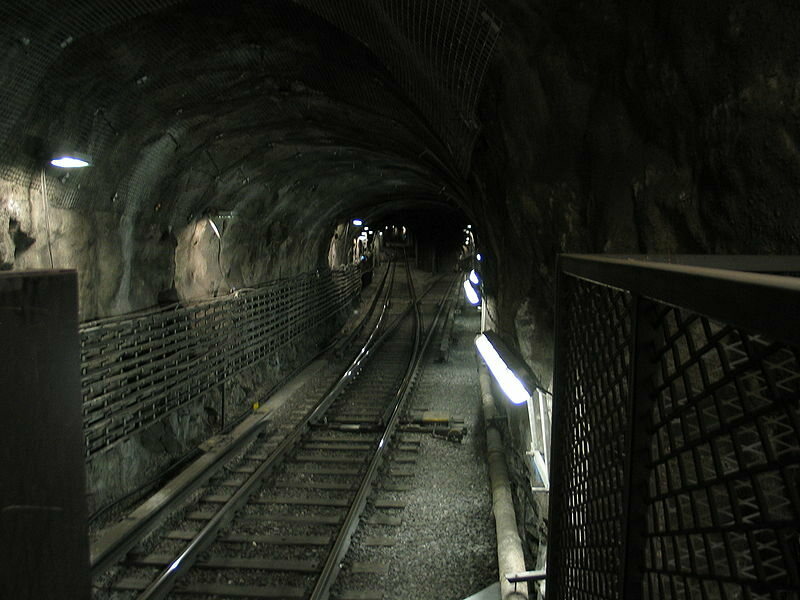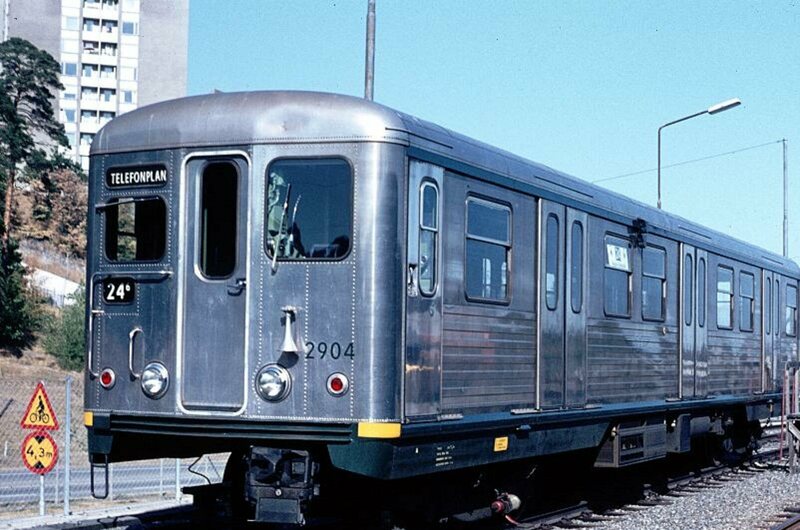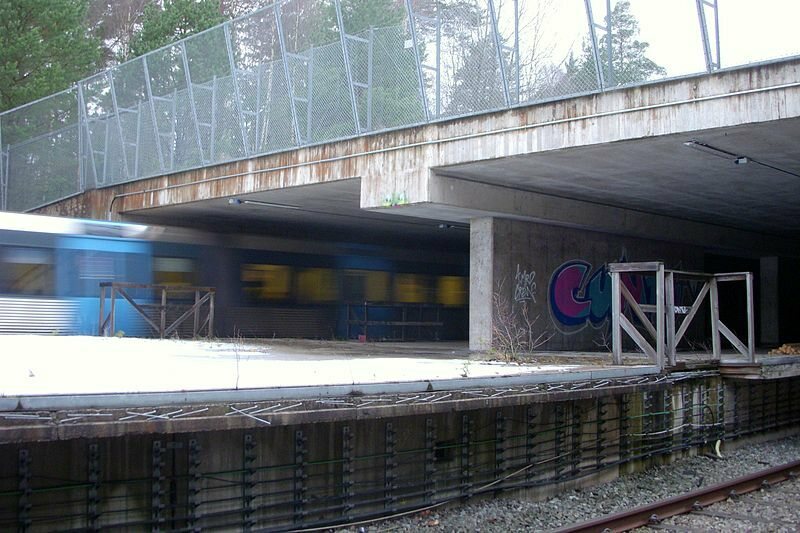The Silver Arrow, a Story of a Real Life Ghost Train Haunting Stockholm Metro

The story of Stockholm’s poltergeist locomotive begins in 1965. According to Christopher Sandahl, the director of Spårvägsmuseet, the Swedish Tramway Museum. That year, Stockholm Metro purchased eight unpainted aluminum train cars to add to its fleet. This bare aluminium train, which could be made more cheaply than the standard green ones already running on the metro, was mainly used as a test to see how it performed, the idea being that such trains could be a cost-effective option for the expanding urban transit system.

Hundreds of trains at the Metro were painted a stock green in the 1960’s, so when a silver train showed up on a line, it got people talking. Even before it became a ghost story, the train had earned the nickname Silverpilen (the Silver Arrow) from the locals. According to Sandahl, the train wasn’t very popular among Stockholmers. The Stockholmer’s took offence at its raw look.
What made it different from the other trains?
The things that made the Silver Arrow different from the other trains were:
- It had a shiny silver interior
- The train cars were had a slightly different design than the standard Stochholm Metro trains
- The doors slid open on the outside of the train, allowing for a slightly expanded interior
- Inside were free from the usual ads and decorations on other trains. Unlike the generally shining and clean metro trains most commuters were used to, the insides of the silver train were a bit dirtier, bearing the marks of removed graffiti, and generally looking a bit more dystopian.
- All of this *contrast to the regular trains combined with Silverpilen’s unpredictable rarity at least from the point of view of the commuters created fertile ground for an urban legend to grow up around it.

A Basic Legend
Sandahl tells the basic legend saying that “if you got onboard the Silver Arrow you didn’t get taken to any station. You just traveled and traveled and traveled and never got out.” Swedish ethnologist and urban legend scholar, Bengt af Klintberg, who wrote about Silverpilen in his 1986 book, Råttan i pizzan (The Rat in the Pizza), adds some of the legend’s variants:
“It is only seen after midnight. It stops only once every year. The passengers in the train seem to be living dead, with expressionless, vacant looks. A very common detail is that a person who just wanted to travel to the next station remained seated for one week in the Silverpilen. Many girls dared not enter trains which they believed could be Silverpilen.”
Was written in the book, describing Silverpilen (Sliver Arrow) as something you don’t want to encounter. If you ever encounter Silverpilen, you have come to your demise.
Is it the end?
By the 1970’s the legend of Silverpilen was widespread, well-known, and growing. In the early part of the decade, the metro system was expanded, opening the new Blue Line in 1975. As part of this expansion, the Kymlinge station was built to service an area that was slated for an economic redevelopment. However this development never materialized. Without the expected demand for the station, the fully completed structure never opened to commuters. Soon this ghost station began accruing urban legends of its own, sparking a local saying: “Only the dead get off at Kymlinge.” Like Silverpilen, Kymlinge was blank and unadorned on the inside, without ads or signs, making it look pretty ghostly in contrast to the other bustling stations along the metro.
It was not long before the legends of Kymlinge and Silverpilen became intertwined, and the station came to be known as the home of Silverpilen, or the station where the ghost train picks up the dead. Just like Silverpilen, Kymlinge was very plainly real, but stories of the supernatural train made it even scarier… But, that was not the end of Silverpilen.

Silverpilen continued to be used in the Stockholm Metro until 1995 or 1996, when it was finally decommissioned, and the cars were split up. But the legend continued. “I’ve been working at the transport museum for 10 years,” Sandahl says, “and there are a lot of people who know [the legend]. All the Stockholmers know what Silverpilen is.” As Klintberg puts it, “[The Silverpilen cars] have been taken out of service. However, the rumor of a ghost train has survived them, you still hear it, especially among young people.”
In the future…
The ghost of Silverpilen lives on in the minds of metro riders, but the real train hasn’t completely disappeared either. According to Sandahl a couple of the cars survive around the country. Half of one of the trains was moved the Stockholm Police Academy, where it is used as a training setting to teach cadets how to police crime on the metro. (Assumedly not supernatural crime though, or else Silverpilen would likely be public enemy number one.) The only other car that is known to remain is located at the headquarters of Hägglunds, the Swedish company that built the train. Sandahl says it was preserved and at some point there was a cafeteria installed inside.
Conclusion
The stories of Silverpilen still haunt the tracks of the Stockholm Metro and Kymlinge still stands silent and mysterious. But there are still those who remember the truth behind the legends. “Have I seen Silverpilen? Sure.” Klintberg says, “I have been seated in the metallic trains innumerable times. But I am sorry to say, nothing strange ever happened.”
Resources
Information from:
Photos:
Photo 1;
https://en.wikipedia.org/wiki/Stockholm_metro#/media/File:Swe_subway_switch_20050425_001.jpg
Photo 2;
https://en.wikipedia.org/wiki/Silverpilen#/media/File:C5-Silverpilen.jpg
Photo 3;
https://en.wikipedia.org/wiki/Stockholm_metro#/media/File:Tunnelvagn_c2_2417.jpg
Photo 4;
https://en.wikipedia.org/wiki/Kymlinge#/media/File:Kymlinge_station_2012.jpg

Good Job, Abid